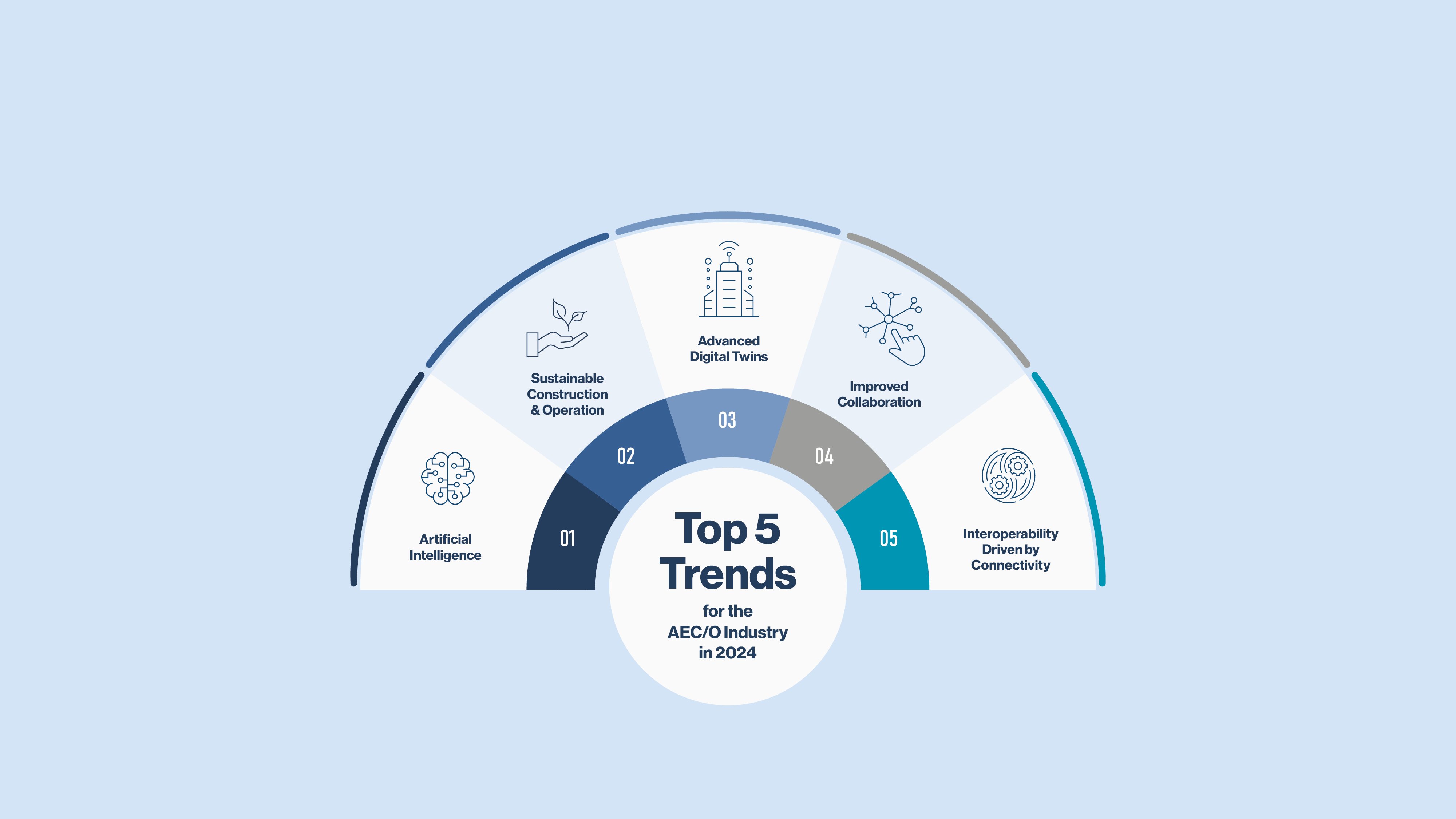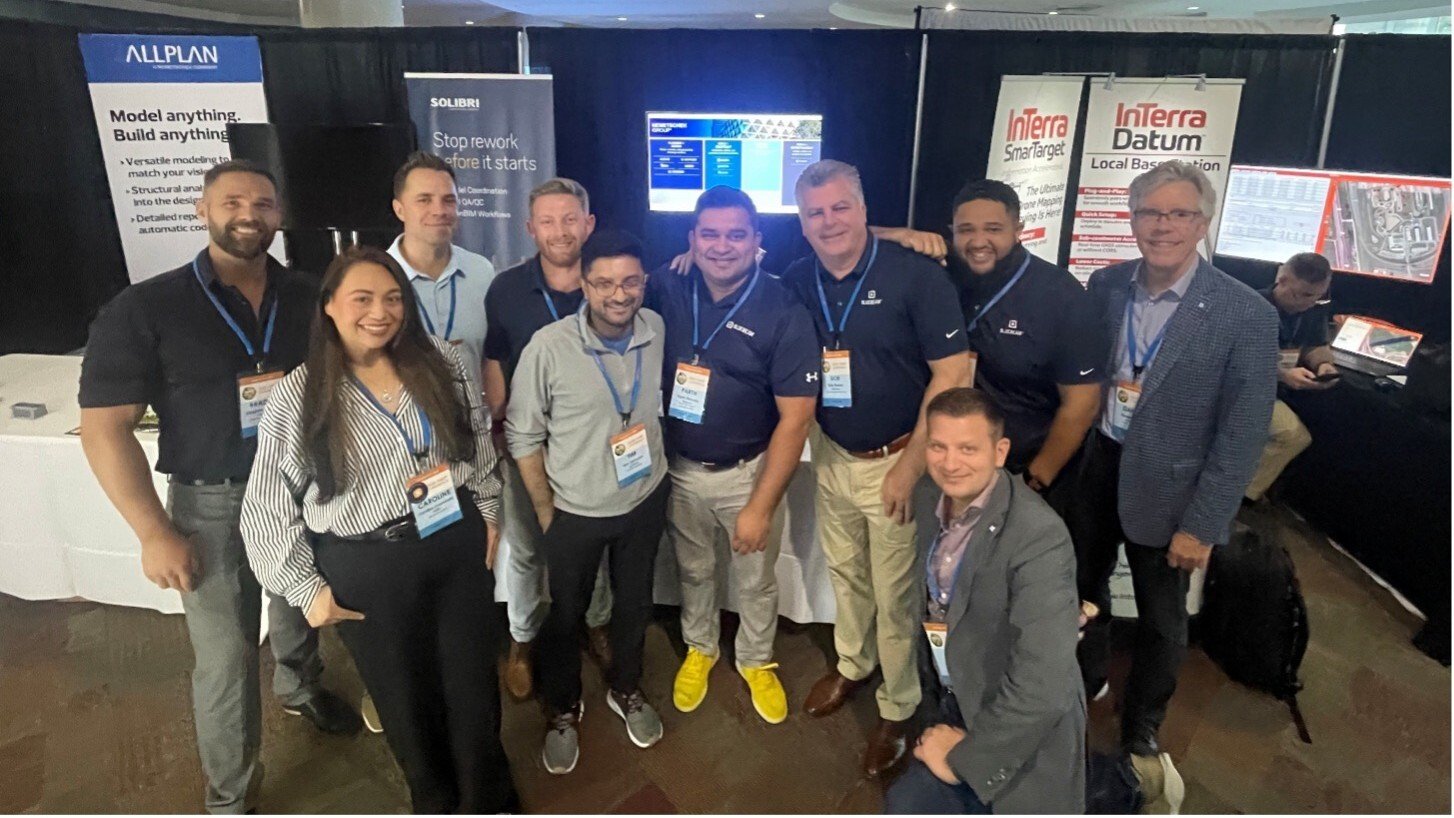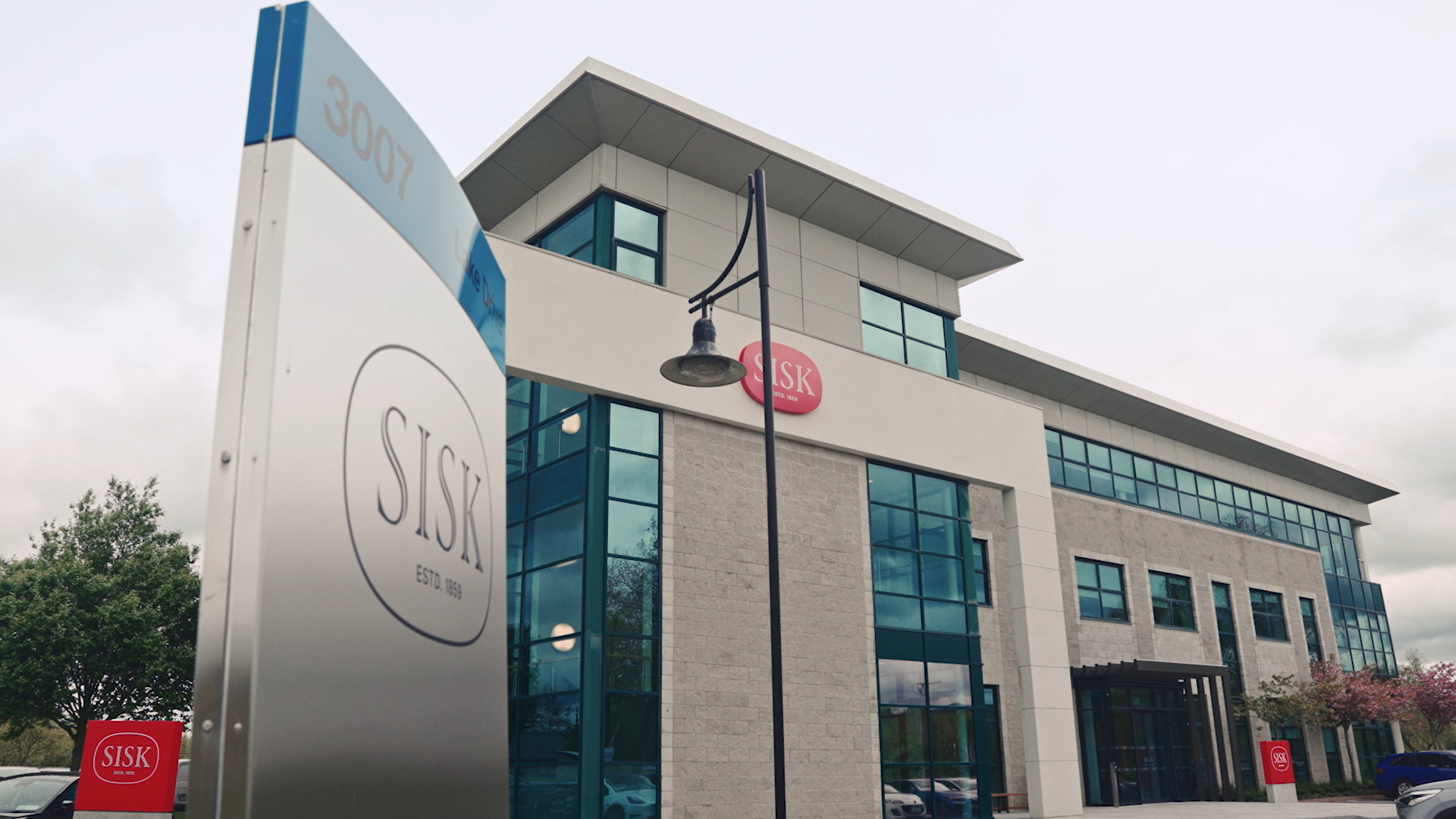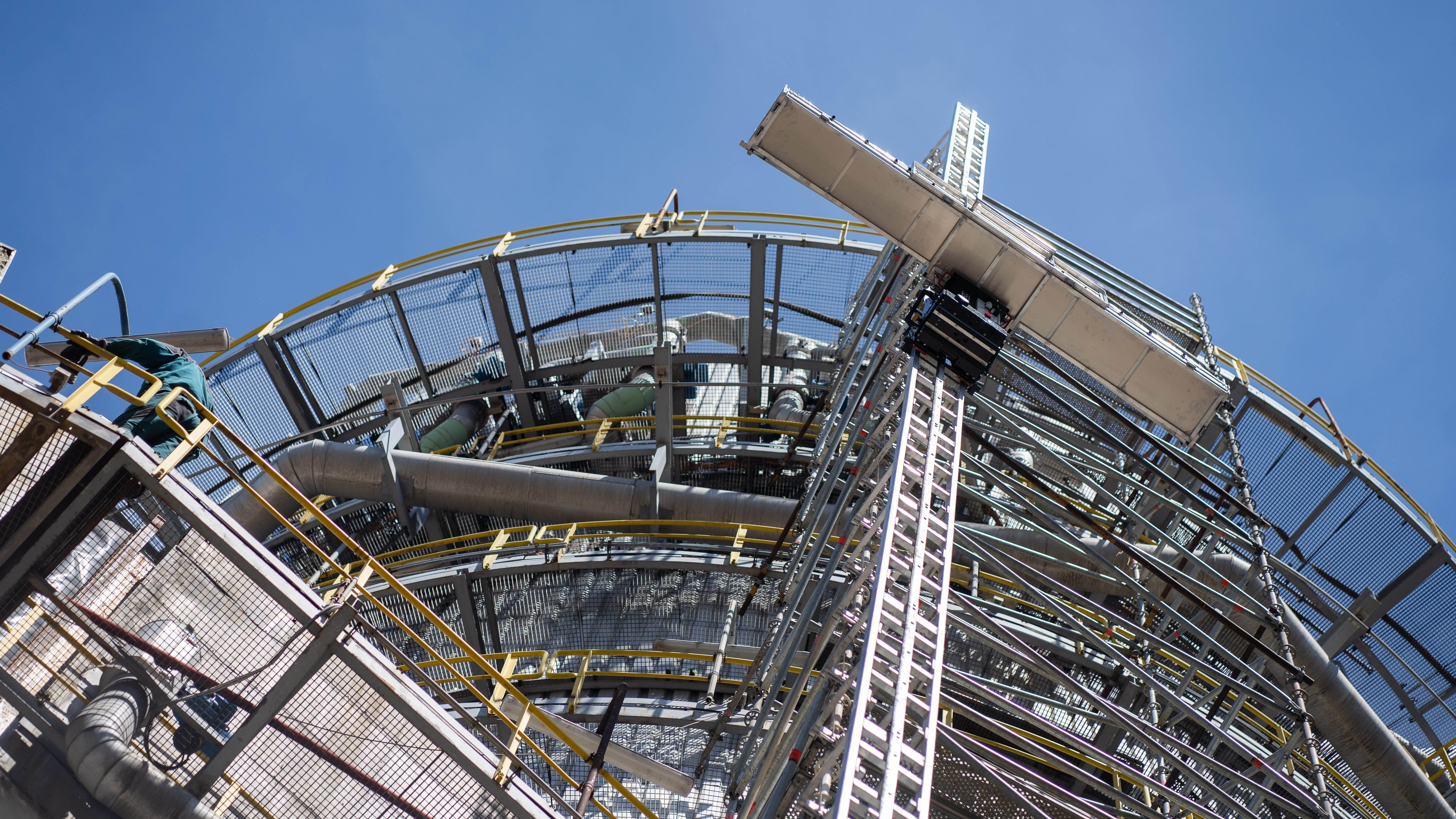The Top 5 Trends for the AEC/O Industry in 2024
Author
Nemetschek Group
This article belongs to the collection Sustainability
To the topic pageAs the AEC/O industry steps into 2024, it faces a landscape that is continuously reshaped by technological advancements and evolving challenges. This year is poised to witness an integration of advanced technologies and innovative practices, heralding a paradigm shift in how we design, build, and operate within the built environment. Embracing these changes, the industry is gearing up to redefine its workflows, prioritize sustainability, and enhance collaboration. This transformation is not just about adopting new tools; it's about adapting to meet the demands of a rapidly changing world. As we look ahead, these five trends will be key themes within the AEC/O sector in 2024, driving it towards a more integrated, responsive, and sustainable future.
1. Artificial Intelligence
By far the biggest trend we will see this year is the integration of Artificial Intelligence (AI) across the design, build, and operate lifecycle. AI will offer solutions to longstanding workforce challenges and help attract a new generation of talent with tech-centric workflows. While AI has been forecast as a game-changer for several years, 2024 is the year that these predictions will come to fruition as new AI tools and features are implemented.
In the design phase, AI will streamline workflows, aid in complex decision-making, and enhance creative processes. Tools that leverage generative AI (or GenAI) will assist architects and engineers by optimizing designs for efficiency and sustainability, offering predictive modeling for better project outcomes, and reducing manual, time-consuming tasks.
During construction, AI's influence will extend to managing logistics, overseeing quality control, and automating tasks. This will help mitigate labor shortages, improve safety, and ensure adherence to plans, thus minimizing errors and delays.
In the operation phase, AI will significantly enhance building management. It will analyze performance data for energy efficiency, predict maintenance needs, and optimize facility management, ensuring buildings are sustainable and functional throughout their lifecycle.
AI tools will also drive an unprecedented upsurge in automation technologies this year, with applications across the entire building life cycle. The powerful technologies will not only elevate efficiency and precision across these stages but also unlock new avenues for innovation, solidifying its role as a pillar of future AEC/O practices, as long as they are deployed in an ethical, trustworthy manner.
2. Sustainable Construction & Operation
With the increasing pressure to decarbonize, the AEC/O industry's move towards sustainable building will be further propelled by digital tools in 2024. Advanced sustainable practices will include the use of smart building technologies and prioritization of eco-friendly materials, supported by digital modeling and management. Smart systems will increasingly use AI and sensors for optimizing energy use and managing building climates, while cloud-based platforms will aid in monitoring resources like water.
Additionally, the use of environmentally conscious materials in conjunction with BIM software will enable more precise planning and resource efficiency. Modern methods of construction, such as prefabrication, will also play a crucial role in minimizing waste and emissions, aligning construction processes with sustainability goals.
3. Advanced Digital Twins
This year, digital twins will become more than just representations; they will be integral to the interactive, interconnected fabric of the AEC/O sector, combining AI's analytical prowess with the immersive experiences of AR/VR. By offering real-time analytics and predictive insights, data-driven digital twins will enable advanced simulations of building performance and lifecycle management, leading to significant improvements in sustainability and efficiency.
The integration of digital twins with AR and VR will also redefine stakeholder engagement. In this immersive space, project teams can interact with complex structures in real-time, enhancing design reviews, client presentations, and collaborative decision-making. The role of digital twins as the foundation of these virtual environments highlights their growing significance.
Furthermore, as smart city initiatives gain momentum, digital twins will be central in visualizing urban infrastructure, monitoring city-wide systems, and planning future developments. They will enable a seamless flow of information between the physical and digital worlds, driving innovation in urban management and sustainability.
4. Improved Collaboration
How we collaborate within the AEC/O industry will be revolutionized by cloud technology, augmented reality (AR) and virtual reality (VR. The cloud is already enabling the seamless sharing and management of project data, facilitating real-time collaboration regardless of geographical boundaries. Over the coming year, the cloud will only be further refined as new platforms and ways of working are developed.
This will be complemented by AR and VR technologies, which will allow stakeholders to engage with project models in a more interactive and intuitive way for improved understanding and decision-making. These technologies, already influencing various sectors, are set for significant growth thanks to advancements in VR and AR hardware and graphics. In the AEC/O industry, VR in particular is repositioning as a serious design and engineering tool. Its integration with AI will provide more interactive and realistic environments, crucial for simulating real-world scenarios and enabling remote walkthroughs of new buildings. This combination is particularly significant for the AEC industry, where it offers the potential to revolutionize design, planning, and collaboration.
Together, these technologies will not only streamline collaboration but also open new avenues for creative and efficient project development.
5. Interoperability Driven by Connectivity
Of course, underpinning most of these trends is the issue of interoperability, as these technologies become increasingly connected. In 2024, interoperability in the AEC/O industry is set to reach new heights, thanks in part to advancements in Building Information Modeling (BIM) technology. The integration of BIM with digital twins, AI, IoT sensors, and cloud computing is expected to enhance collaboration and data management significantly. This improved connectivity will allow project teams to centralize all building data in one place, leading to more informed decision-making and efficient project delivery. However, getting to this point requires greater interoperability between various solutions, so expect to see more developments on this front over the next year.
Welcoming the Future
As we move into 2024, the AEC/O industry is set to embrace a transformative wave of advancements. From the integration of AI across all phases to the widespread adoption of sustainable practices, the sector is gearing up for a future that is more efficient, collaborative, and innovative. The rise of digital twins, enhanced interoperability, and the increasing use of automation technologies will redefine the industry's approach to project management and execution. Coupled with evolving collaboration methods and the expansion of AR/VR applications, these trends collectively paint a picture of an industry at the forefront of technological innovation, ready to meet the challenges of a rapidly evolving global landscape.





